There are 8 stories. 8 ideas. And 8 ways of thinking about things.
8|8|8
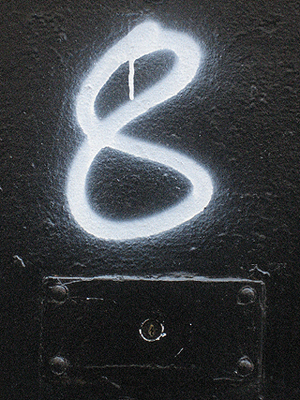
1. On this door. There was a door, that was a door to somewhere else. In merely seeing the door, it was a vision to another place — I knew that it went somewhere. I tried to get in. Any door takes us somewhere — we walk through, and in passing the step, the transom, the lintel, the floor plate, the lock, the bolt, the knob — we cross over. There we go, here we are. I found an 8 door — and it didn’t take me anywhere, because I couldn’t get in. There was white, around the key opening, and I thought: “why there?” Be cause — it might answer. But what I thought about is — passage. Passing. With a pass, a key, a ticket, a code — we’re allowed entrance. Entrancement. In one way, that means that we pass through — and in another, a trance, held. We come in, and give this ticketed code, and there we go, we’re in. We are: in — now that we have a ticket, toll taken. But sometimes, even when you have a ticket, you see the door, it’s marked — you still can’t go in. So? Look at the door and think about its meaning.
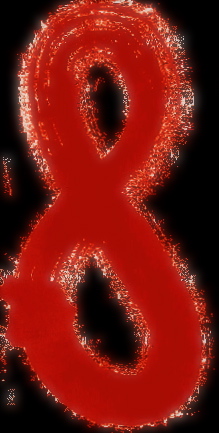
2. I met this person, who was looking for the scent of blood in Winter. This scent space, this making of fragrance, that scent is of metal, salt, color red — and perhaps something deep, yet sweet. When I think about scent I instantly think about other things, particularly things that I’ve seen. I scent something — I smell it on the breeze — I reach to the scene, in what’s been seen. Scene, seen. So, I visualize: salt — crystallizing, crusting; steel, galvanized and chilled; stone wet — iced and lichen-slicked; fallen snow — crystallizing; windowpanes — fingerprinted with frost. When I draw, that happens: I cross, the spinning moebius in one stroke of color, something deep and red, rich — and as the stroke comes forth — from the heart — that color spreads in the wet paper. There is scent, and taste and touch. It extends the color, that fingers out like mossy tendrils. And it’s doing that — the stroke growing — simply because it is what it is – it’s alive. Worlds are formed. When you draw that eight, when you draw that color, redwash — it flows out. And it spreads, a red sea, growing — like the passion that there is, in doing that work — going there. You draw that stroke. And you can see what’s there, and what is not — the color, flows, There’s something about the idea of drawing in color, that brings it, makes it alive — like the scent of blood, in winter — salty and alive.
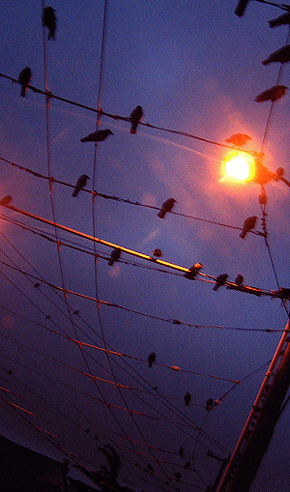
3. First there was one black hanging rag, sometime in the morning long before the arising sun. And this was one crow, looking out — then down at me. I stood there, in the half-light, far before the sun — far arising — in the east of the Rockies; then again, the Cascades; then — passing over, heading on to the Olympics. Then out, skimming over the mistbound sea. Time turns. One day, the earth turns round, gazing at the sun. One year, more — another complete circle, encircled — the orbit spun. Meanwhile, there’s another crow, coming down, looking at me; three, the more; four, five, six. Then there are more — finally, there are eight. And while the sun approaches, I look up at the band of eight — and I watch that crowd double. Well, where are we in the world, that I’m standing there in the dark, looking up — them looking down — a band of crows. It’s simply that — there’s a gathering, and that string of numbers is a ribbon in a moment. And in that momentum, time spinning, they shuffle just for a minute, looking down — they take flight, scrambling out to the blue dawning sky. Everyone moves. Me, too. Along the light — Sun, the black crows.
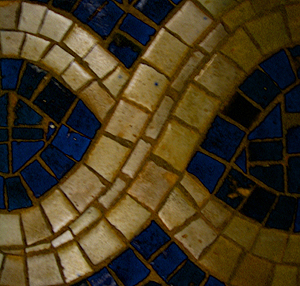
4. In the subway, there are tiles everywhere. Everywhere, there are tiles. But there’s a story, as well — and that has to do with one man, who lead many, in making things, making art, in the subways of NYC. And there’s a lot of his art, imagination and fertile invention — that is still there. Down, as you go — down and down, like a sand hog into the heat. And when you go deeper down into the subways, the heat grows, because there is more energy down there, deeper down. But that is where the art is, that is where the invention is — down there. There is art that is moving about in the minds of gifted men — and women — that made beauty found, down there. And there’s one, that comes to mind, is the man Squire J. Vickers — one special man, among many. During that time, which was the closing of the 19th century, and the beginning of the 20th, there were people then that did the work that thought of themselves as best — bettered — in being widely educated. So Squire J. Vickers, the chief architect of the subway, envisioned himself, his life, as that of a Renaissance man, a thinking and moral torchbearer. Vickers was a dynamo, a grandiloquent practitioner of planning, a painter, a theorist, a literary explorer — and whose other life as an artist often flooded into the subway. His love of tilework, patterning, colorations and geometry still riddles the shiny hallways. He, in the tiny explications of story, miniature mosaics of art and color, these broad swathes of beauty, influenced their design, and what we experience in these speedy hallways, perhaps more than anything, or anyone else. This man who, 30 years the lead designer of the systems, was responsible for building more of today’s NYC subway than any other architect: over 300 stations, many more than any other draughtsman even contemplated. Now we know –Vickers more firmly among the forces that shaped the look of the city — or at least enormous masonry corridors beneath it — in the 20th century. Me, I’m looking for numbers. And I always see the numbers, the letters. The eight.
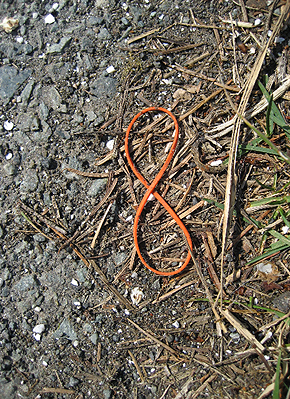
5. When I walk, I’m looking. I was talking to some people about the idea of attention. In the work that I do, and really, in the work that anyone does, it is about attention. Really, what are you focused on — what do you care about? And when you are working on something, who is paying attention to you. Me, I care about what I sense. So, I’m walking and I’m looking. And being with my father, he taught me to look out — to look out at the big picture, to see far afield. “What are those trees over there, Tim? Do you see that hawk out there — what kind of raptor is that?” And in being the kind of person that I am, I also find myself looking at things that are close in. And in a way, that — therein — is the place of the balance. Gathering your sense of attention in a way that allows you to be in. And to be out. You are close in, and you seen what is nearest to you – and you see out. Like this band that curls on itself, that eight is a coiled ribbon of plastic — very tiny — but it comes out, springs out, like color on fire. And you see it there. And it reminds you of something. First I thought of my father’s habit of taking the rubber bands from the newspapers that were delivered everyday — and placing them on the doorknob on the front door. And if you needed one, that is where you went. But no one ever really needed one, so they would dissolve, on themselves. But that’s the story that keeps going around in my head, when I think about this rubber band. Like the way it turns on itself, it keeps going around. Like this band.
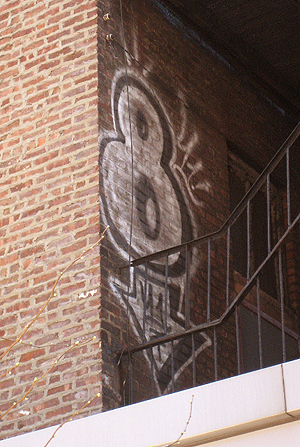
6. I was climbing, going from one floor to another — and then I learned what floor I was on. It wasn’t that I was really questioning it — wondering what floor I was on; but then I came there, came around the corner and there it was. The 8th floor. And sometimes what I do is to try and help people figure out where they are — to create maps, to get from one place to another. I think that my history, my story — from when I was a child — was a love of maps. In fact, I think there is a kind of art in quickly, even intuitively, comprehending a map — a piece of paper that tells you where you are, and where you are going. Or something on the wall, that points — up or down or sideways, where are you going? Some people understand maps; and others, do not. Of course, that’s presumptive — that one might know where to go; but maps help in that finding. I had a friend that collected maps — and she had dozens of them, some of them being nearly imaginary. And really, in contemplating the ideas about map-making, cartography, finding ways, guiding — and even gathering information — it’s about getting from one place to another. Information does that, as well. It is grouped, regrouped, gathered — and you get from one place to another, in your understanding. So I’m walking — and I get up there, climbing in this old building. And there it is, big as day — 8. But my first thought was — “that can’t be right, I can’t really be in the 8th floor”. That’s how it works — even when the information is right in front of you — sometimes you just don’t believe it. As long as you keep trying. Moving. And the numbers keep going by.
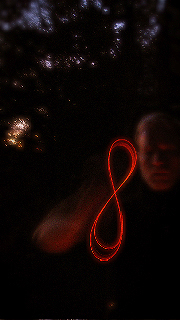
7. There is a long fascination with fire — and it’s something that we all feel. Where is the fire? What is your fire? My character is about siting — and citing — fire. What I’m giving is fire — it is whatever light and heat that I can offer. And it’s surely not everything, but it’s getting stronger. When I think about these allegories on fire, I realize that fire — and a love of fire — is a Girvin characteristic; it’s a part of our genetic code. We like big fires — and we do like to make them. But we like fires that are big, and fires that are small — we simply celebrate fire and all things flammable — and the transposition in fire, from one form to another. Being in NYC, with the team there, I realized that you could use Purel to create light sculptures in the dark — with your hands, lit on fire with the flammable fuel content in that antimicrobial mixture. But, there’s a challenge there — it is too hot. Better still, then, sticks, wood shards, ritual, firelight. So I began to experiment with that idea — fire, woodsticks, shards of bark – lit afire, and drawing with them in the dark light. And with the sparks, the heated line glows alive — and still, in photographing it, you can’t see a thing. But in your imagination — you know the strokes in the eye of your mind — and you draw in the dark, the smoke rising from your gestures into the black and chilled nightsky. And the sparks draw the line — strokes that disappear in an instant, smoke trailing, that memory.
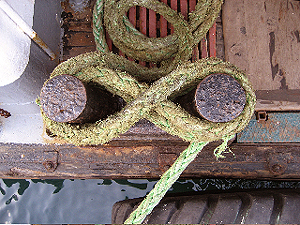
8. The 8 is a knot, it ties up — it binds and contains ideas. This is the last in the numbers — and it, too, is about drawing. Because mostly everything in my life is about drawing things — drawing you out, helping things to come out. There’s something about the concept of illustration that is about making things shiny — gathering content in a way that translates that information, changes that information and, in the etymology of it, polishes it, brings light to it — makes it lustrous. That is about beauty. And the 8 is a good symbol for that in the opening of everything that’s out there, everything that is on the edge of our experience. That moment — 8.08.08.
That portal opens now. Turning now, turning again.
Beauty full.
tsg | decatur island